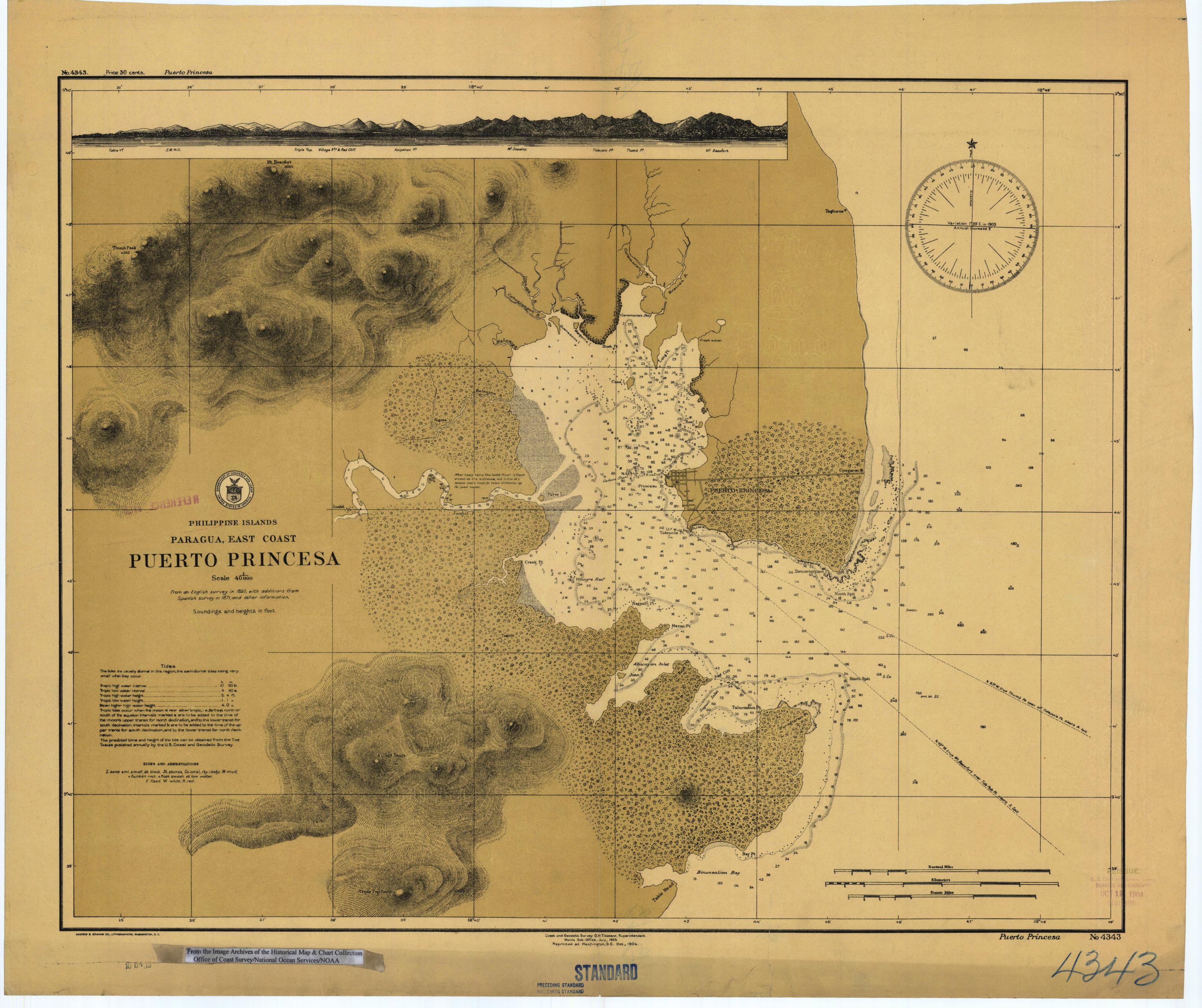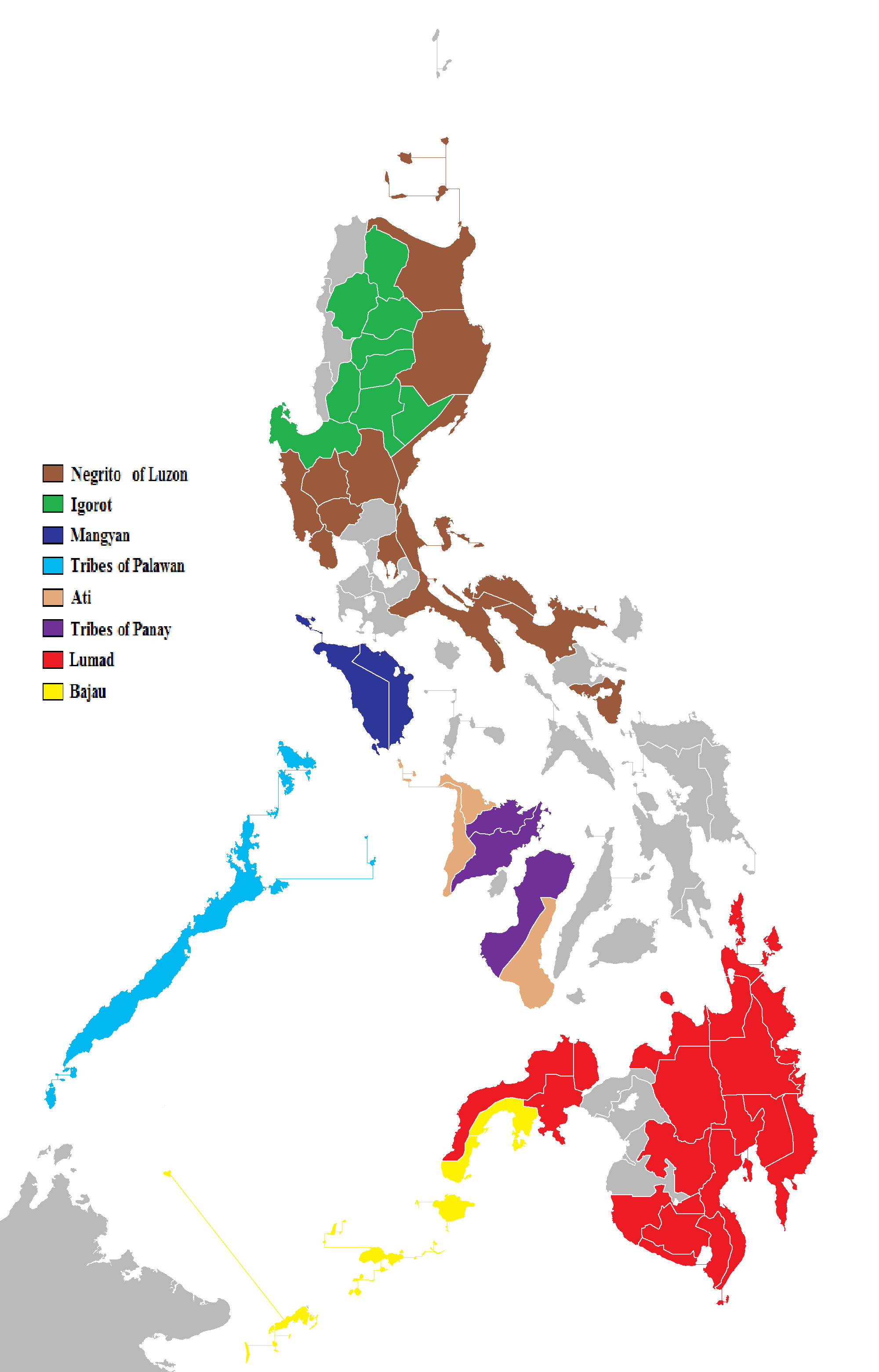|
Batak (Philippines)
The Batak are one of about 140 indigenous peoples of the Philippines. They are located in the northeastern portions of Palawan, a relatively large island in the southwest of the archipelago. Since ancient times, the Batak have inhabited a series of river valleys along the coastline of what is today Puerto Princesa City. There are only about 450 Batak remaining according to a 1990 census. Also called ''Tinitianes'', the Batak are considered by anthropologists to be closely related to the Aeta of Central Luzon, another Negrito tribe. They tend to be small in stature, with dark skin and curly, Afro-textured hair, traits which originally garnered the "Negrito" groups their name. Still, there is some debate as to whether the Batak are related to the other Negrito groups of the Philippines or actually to other, physically similar groups in Indonesia or as far away as the Andaman Islands. History The Batak have for centuries combined a hunting-gathering lifestyle with seeding of u ... [...More Info...] [...Related Items...] OR: [Wikipedia] [Google] [Baidu] |
Batak (Indonesia)
Batak is a collective term used to identify a number of closely related Austronesian ethnic groups predominantly found in North Sumatra, Indonesia, who speak Batak languages. The term is used to include the Karo, Pakpak, Simalungun, Toba, Angkola, and Mandailing which are related groups with distinct languages and traditional customs (''adat''). Prehistory Linguistic and archaeological evidence indicates that Austronesian speakers first reached Sumatra from Taiwan and the Philippines through Borneo or Java about 2,500 years ago, and the Batak probably descended from these settlers. While the archaeology of southern Sumatra testifies to the existence of neolithic settlers, it seems that the northern part of Sumatra was settled by agriculturalists at a considerably later stage. Although the Batak are often considered to be isolated peoples thanks to their location inland, away from the influence of seafaring European colonials, there is evidence that they have been inv ... [...More Info...] [...Related Items...] OR: [Wikipedia] [Google] [Baidu] |
Puerto Princesa
Puerto Princesa, officially the City of Puerto Princesa (Cuyonon: ''Siyudad i'ang Puerto Princesa''; fil, Lungsod ng Puerto Princesa), is a 1st class highly urbanized city in the Mimaropa region of the Philippines. According to the 2020 census, it has a population of 307,079 people. It is a city located in the western Philippine province of Palawan, and is the westernmost city in the Philippines. Though the seat of government and capital for the province, the city itself is one of 38 independent cities within the Philippines not controlled by the province in which it is geographically located and is therefore an independent area located within Palawan. It is the least densely populated city in the Philippines with 110 inhabitants per square kilometre (280/square mile). In terms of land area, the city is the second largest geographically after Davao City with an area of . Puerto Princesa is the location of the Philippines' Western Command headquarters. Today, Puerto Princesa ... [...More Info...] [...Related Items...] OR: [Wikipedia] [Google] [Baidu] |
Ethnic Groups In Palawan
An ethnic group or an ethnicity is a grouping of people who identify with each other on the basis of shared attributes that distinguish them from other groups. Those attributes can include common sets of traditions, ancestry, language, history, society, culture, nation, religion, or social treatment within their residing area. The term ethnicity is often times used interchangeably with the term nation, particularly in cases of ethnic nationalism, and is separate from the related concept of races. Ethnicity may be construed as an inherited or as a societally imposed construct. Ethnic membership tends to be defined by a shared cultural heritage, ancestry, origin myth, history, homeland, language, or dialect, symbolic systems such as religion, mythology and ritual, cuisine, dressing style, art, or physical appearance. Ethnic groups may share a narrow or broad spectrum of genetic ancestry, depending on group identification, with many groups having mixed genetic ancestry. Ethnic gr ... [...More Info...] [...Related Items...] OR: [Wikipedia] [Google] [Baidu] |
Indigenous Peoples Of The Philippines
The Philippines consist of numerous upland and lowland indigenous ethnolinguistic groups living in the country, with Austronesians making up the overwhelming majority, while full or partial Negritos scattered throughout the archipelago. The highland Austronesians and Negrito have co-existed with their lowland Austronesian kin and neighbor groups for thousands of years in the Philippine archipelago. The primary difference is that they were not absorbed by centuries of Spanish and United States colonization of the Philippines, and in the process have retained their customs and traditions. This is mainly due to the rugged inaccessibility of the mountains and established headhunting and warrior cultures, which discouraged Spanish and American colonizers from coming into contact with the highlanders. In the interest of clarity, the term ''indigenous'' as used in the Philippines refers to ethnolinguistic groups or subgroups that maintain lt of partial isolation, or independence, throug ... [...More Info...] [...Related Items...] OR: [Wikipedia] [Google] [Baidu] |
Tagbanwa People
The Tagbanwa people ( Tagbanwa: ) are one of the oldest ethnic groups in the Philippines, and can be mainly found in the central and northern Palawan. Research has shown that the Tagbanwa are possible descendants of the Tabon Man, thus making them one of the original inhabitants of the Philippines.The Tagbanua Tribe Accessed August 28, 2008. They are a brown-skinned, slim, and straight-haired ethnic group.Ethnic Minorities in the South: Tagbanua . Accessed August 28, 2008. There are two major classifications based on the geographical location where they can be f ... [...More Info...] [...Related Items...] OR: [Wikipedia] [Google] [Baidu] |
Palawan People
The Palawan tribal people, also known as the Palawano or the Palaw'an, are an indigenous ethnic group of the Palawan group of islands in the Philippines. Palawanos are more popularly known as Palawans, which is pronounced faster than the name of the province. Classification They are divided into four ethno-linguistic subgroupings. These are the Quezon Palawano which is also known as the Central Palawano; the Bugsuk Palawano or South Palawano; Brooke's Point Palawano; and Southwest Palawano. The Quezon Palawano subgroup are found in Southern Palawan, particularly on the western section of the municipality of Quezon including the eastern part of Abo-abo of the municipality of Sofronio Espanola, going southward down to the northern section of the municipality of Rizal. A large group of Palawans can also be found in Sitios Gugnan, Kambing, Tugpa, and Kalatabog of Barangay Panitian. The Taw't Bato of the municipality of Rizal at the foot of Mt. Matalingahan also belongs to this same Pa ... [...More Info...] [...Related Items...] OR: [Wikipedia] [Google] [Baidu] |
Animism
Animism (from Latin: ' meaning 'breath, Soul, spirit, life') is the belief that objects, places, and creatures all possess a distinct Spirituality, spiritual essence. Potentially, animism perceives all things—Animal, animals, Plant, plants, Rock (geology), rocks, River, rivers, Weather, weather systems, human handiwork, and perhaps even Word, words—as animated and alive. Animism is used in the anthropology of religion, as a term for the Belief, belief system of many Indigenous peoples, especially in contrast to the relatively more recent development of organized religions. Animism focuses on the Metaphysics, metaphysical universe, with a specific focus on the concept of the immaterial soul. Although each culture has its own mythologies and rituals, animism is said to describe the most common, foundational thread of indigenous peoples' "spiritual" or "supernatural" perspectives. The animistic perspective is so widely held and inherent to most indigenous peoples, that they ofte ... [...More Info...] [...Related Items...] OR: [Wikipedia] [Google] [Baidu] |
Slash And Burn
Slash-and-burn agriculture is a farming method that involves the cutting and burning of plants in a forest or woodland to create a field called a swidden. The method begins by cutting down the trees and woody plants in an area. The downed vegetation, or "slash", is then left to dry, usually right before the rainiest part of the year. Then, the biomass is burned, resulting in a nutrient-rich layer of ash which makes the soil fertile, as well as temporarily eliminating weed and pest species. After about three to five years, the plot's productivity decreases due to depletion of nutrients along with weed and pest invasion, causing the farmers to abandon the field and move to a new area. The time it takes for a swidden to recover depends on the location and can be as little as five years to more than twenty years, after which the plot can be slashed and burned again, repeating the cycle. In Bangladesh and India, the practice is known as jhum or jhoom. Slash-and-burn is a type of shif ... [...More Info...] [...Related Items...] OR: [Wikipedia] [Google] [Baidu] |
Andaman Islands
The Andaman Islands () are an archipelago in the northeastern Indian Ocean about southwest off the coasts of Myanmar's Ayeyarwady Region. Together with the Nicobar Islands to their south, the Andamans serve as a maritime boundary between the Bay of Bengal to the west and the Andaman Sea to the east. Most of the islands are part of the Andaman and Nicobar Islands, a Union Territory of India, while the Coco Islands and Preparis Island are part of the Yangon Region of Myanmar. The Andaman Islands are home to the Andamanese, a group of indigenous people that includes a number of tribes, including the Jarawa and Sentinelese. While some of the islands can be visited with permits, entry to others, including North Sentinel Island, is banned by law. The Sentinelese are generally hostile to visitors and have had little contact with any other people. The government protects their right to privacy. History Etymology In the 13th century, the name of Andaman appears in Late Middle ... [...More Info...] [...Related Items...] OR: [Wikipedia] [Google] [Baidu] |
Indonesia
Indonesia, officially the Republic of Indonesia, is a country in Southeast Asia and Oceania between the Indian and Pacific oceans. It consists of over 17,000 islands, including Sumatra, Java, Sulawesi, and parts of Borneo and New Guinea. Indonesia is the world's largest archipelagic state and the 14th-largest country by area, at . With over 275 million people, Indonesia is the world's fourth-most populous country and the most populous Muslim-majority country. Java, the world's most populous island, is home to more than half of the country's population. Indonesia is a presidential republic with an elected legislature. It has 38 provinces, of which nine have special status. The country's capital, Jakarta, is the world's second-most populous urban area. Indonesia shares land borders with Papua New Guinea, East Timor, and the eastern part of Malaysia, as well as maritime borders with Singapore, Vietnam, Thailand, the Philippines, Australia, Palau, and India ... [...More Info...] [...Related Items...] OR: [Wikipedia] [Google] [Baidu] |
Philippine Negrito Languages
The Negrito peoples of the Philippines speak various Philippine languages. They have more in common with neighboring languages than with each other, and are listed here merely as an aid to identification. Classification The following languages are grouped according to their geographic location, and not genetic classification. Lobel (2013) Lobel (2013) lists the following Black Filipino (i.e., Philippine Negrito) ethnolinguistic groups. ;Northern Luzon * Umiray Dumaget * Remontado Dumagat * Alta, Northern * Alta, Southern * Arta * Casiguran Agta *Nagtipunan Agta * Dinapigue Agta * Central Cagayan Agta * Pahanan (Agta) * Dupaningan Agta *Atta (3-4 languages) (''Lobel (2010) lists the following Negrito languages that are spoken on the eastern coast of Luzon Island, listed from north to south.'') * Dupaningan Agta (Northern Luzon branch) * Pahanan Agta * Casiguran Agta * Umiray Dumaget * Remontado Dumagat * Inagta Alabat * Manide * Inagta Partido * Inagta Rinconada Furthermore, R ... [...More Info...] [...Related Items...] OR: [Wikipedia] [Google] [Baidu] |





